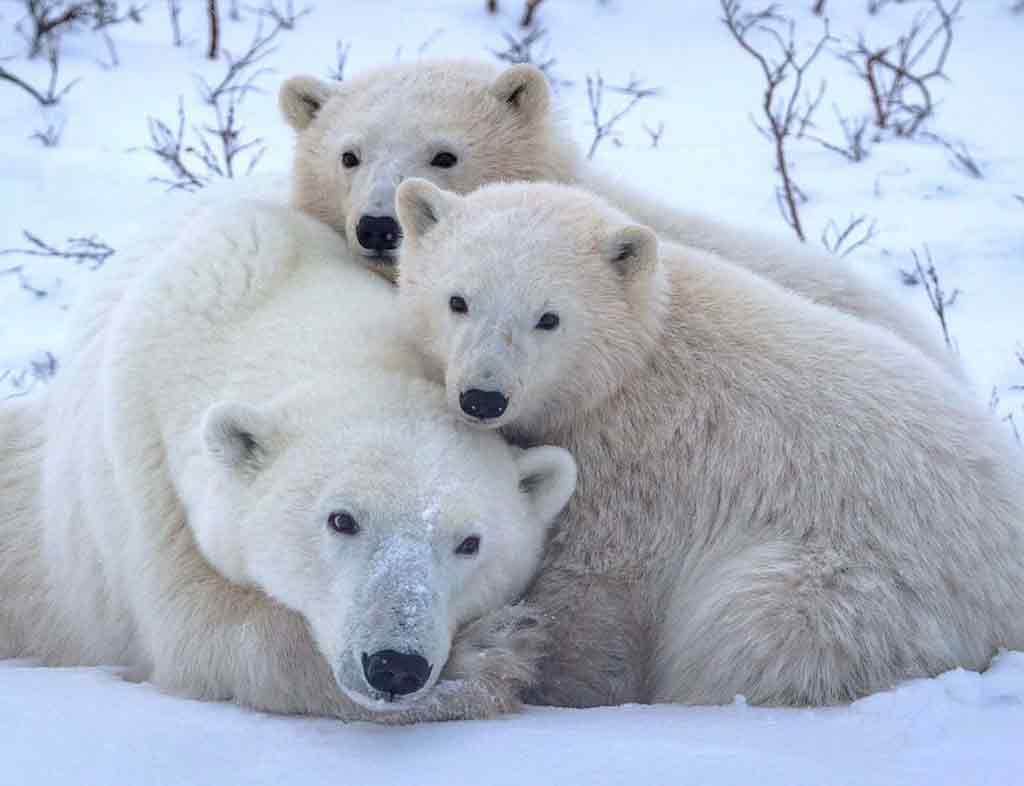Polar Bear Icon of the Arctic, Welcome to our exploration of the majestic polar bear, the largest land carnivore on Earth and a symbol of the Arctic wilderness. In this article, we’ll delve into the fascinating world of polar bears, from their physical characteristics to the threats they face and the conservation efforts aimed at protecting them.
Table of Contents
Physical Characteristics of Polar Bears
Polar Bear Icon of the Arctic are well adapted to their Arctic environment, with thick layers of insulating fur and a thick layer of blubber to keep them warm in freezing temperatures. They have large, powerful bodies, with adult males weighing up to 1,500 pounds and standing over 10 feet tall when on their hind legs.
Habitat and Range of Polar Bear Icon of the Arctic
Polar bears are found throughout the Arctic region, from Alaska and Canada to Russia and Norway. They primarily inhabit areas with sea ice, which they rely on for hunting seals, their primary prey. As sea ice diminishes due to climate change, polar bears face increasing challenges in finding food and suitable habitat.
Diet and Feeding Habits
Polar bears are apex predators, with seals making up the majority of their diet. They are skilled hunters, using their keen sense of smell and excellent swimming abilities to locate seal-breathing holes in the ice. Once they spot a seal, polar bears will patiently wait for hours near the hole before ambushing their prey.
Behaviour and Social Structure
Polar bears are solitary animals for most of the year, but they do come together during the breeding season and occasionally when scavenging a large carcass. They have a hierarchical social structure, with dominant males asserting their dominance over females and younger males.
Reproduction and Life Cycle
Female Polar Bear Icon of the Arctic give birth to one to three cubs in a den dug into the snow or ice. Cubs are born blind and helpless and rely on their mother’s milk for nourishment. They stay with their mother for around two years, learning essential survival skills before venturing out on their own.
Adaptations to the Arctic Environment
Polar bears have several adaptations that help them thrive in their Arctic environment. Their white fur provides camouflage against the snow and ice, while their large paws act as snowshoes, allowing them to walk on thin ice without breaking through.
Threats to Polar Bears
Polar bears face numerous threats to their survival, including climate change, loss of sea ice habitat, pollution, and human activities such as hunting and oil and gas exploration.
Climate Change and Loss of Sea Ice
Climate change is the most significant threat facing polar bears today. As temperatures rise, Arctic sea ice is melting at an alarming rate, reducing polar bears’ access to their primary hunting grounds and forcing them to travel greater distances in search of food.
Human Activities
Human activities such as hunting, pollution, and oil and gas exploration also pose significant threats to polar bears. Hunting for their fur and body parts, as well as accidental bycatch in fishing nets, further endangers polar bear populations.
Conservation Efforts
Conservation efforts aimed at protecting Polar Bear Icon of the Arctic include habitat conservation, reducing greenhouse gas emissions, and mitigating human-wildlife conflicts. International agreements such as the Polar Bear Agreement and the Convention on International Trade in Endangered Species (CITES) also play a crucial role in polar bear conservation.
Research and Monitoring
Research and monitoring programs help scientists better understand polar bear populations and their behaviour, allowing for more effective conservation strategies. Techniques such as satellite tracking and genetic analysis provide valuable insights into polar bear ecology and population dynamics.
Jaldapara Wildlife Jeep Safari Thrilling Adventure
Polar Bear Icon of the Arctic

FAQs
1. Why are polar bears endangered?
Polar bears are endangered primarily due to climate change and the loss of sea ice habitat, which affects their ability to hunt for food.
2. What can be done to save polar bears?
Conservation efforts to save polar bears include reducing greenhouse gas emissions, protecting their habitat, and mitigating human-wildlife conflicts.
3. Are polar bears aggressive towards humans?
Polar bears are generally shy and avoid humans, but they can become aggressive if they feel threatened or provoked.
4. How many polar bears are left in the wild?
Estimates suggest there are between 22,000 and 31,000 polar bears left in the wild, although their numbers are declining due to habitat loss and other threats.
5. What role do polar bears play in the Arctic ecosystem?
Polar bears play a crucial role as apex predators in the Arctic ecosystem, helping to regulate seal populations and maintain the balance of the marine food web.